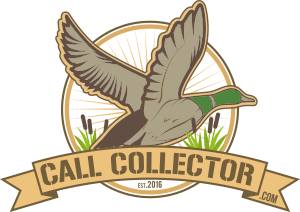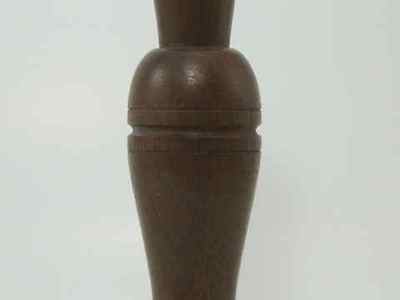Call Maker - Ken Martin
Name: Ken Martin
City: Salmon / Idaho Falls
State: Idaho
Country: USA
Born: 1922
Died: 2001
Description
Martin got his start in the 1930s because good sounding calls were difficult to obtain. While in southern Illinois, he began whittling calls.
Most people don’t know he grew up in Canada and was very familiar with how ducks and geese sounded in the wild. Kens’ calls “rang true” and were quickly purchased by hunters.
Because Martin calls worked, hunters referred their friends to him. Due to the increasing demand for his duck calls, Ken started making them full time around 1960. Martin had tried farming, working on steamboats, welder and boilermaker. However, it was his love of hunting and making calls which provided him with long term income.
Most of his calls are made from walnut. Around 1960 Ken started to use a stamp with his name and current residence. Make note Martin lived in Lemont, Ill., and both Salmon and Idaho Falls, Idaho, in that order. The stamping helps date calls because they indicate where he was living when the call was made.
His style is easily recognized and often copied. The lines are simple, yet soothing to the eye. The finish on Martin calls has been called, “As smooth as a baby’s behind.” To this day, Martin calls are sought after by both hunters and collectors alike.
As noted, Martin calls could have stamping from three different towns. His early calls had no stamp so it’s good to be wary when someone is selling a Martin call with no markings. Such calls are legitimate, but many collectors shy away from them because you can never be sure.
Once he began making calls full time, packaging came on the scene. I have seen many different variations of his boxes. Most will have a brace of mallards on the top with the words, “Ken Martin’s Duck Call, Hand Made & Hand tuned.” The side panel usually says, “Ken Martin’s Game Calls” and address. Just so you know, his address for Lemont, Ill., was 107th and Archer Avenue.
Many of his Illinois boxes are light green in color. As always, those made before the mid 1960s will have no zip code. Each box came with duck calling instructions and is a soft tan color. Those instructions also provide diagrams on how to properly place in the wedge and reed. Failure to comply with those instructions meant your call would not sound correct. Boxes are 6 inches long and 1 5/8 inches deep. Calls from Illinois were 4 inches long with the stamping around the lanyard groove. The folded instruction sheet is 5 inches by 3.5 inches.
Info provided By Seth Fields.
Have more info about Ken Martin?
We'd like to know!
Sign up for an account and start contributing:
Have an account already? Log In
*Contributions will not post directly to the site. All contributions will be reviewed and considered.






